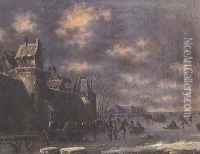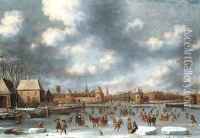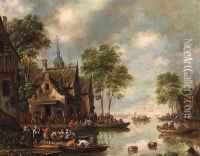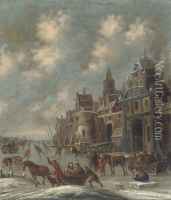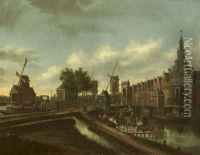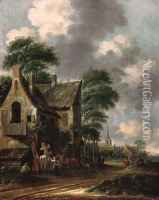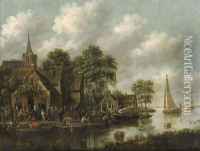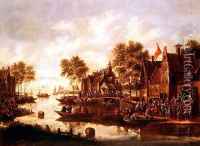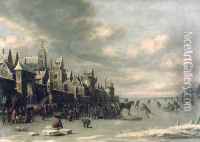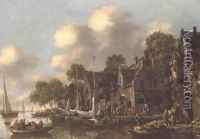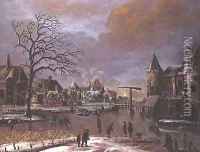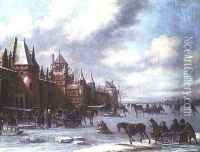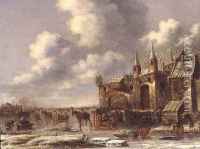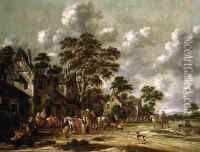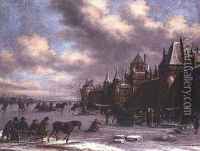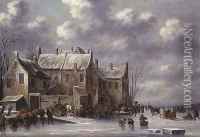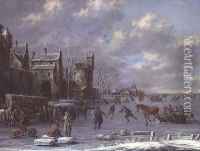Thomas Heeremans Paintings
Thomas Heeremans was a Dutch Golden Age painter, known for his landscapes and cityscapes imbued with a characteristic Dutch quality. Born in 1641 in Haarlem, Netherlands, Heeremans developed his artistic skills in a period that was renowned for a great proliferation of artistic talent and a high appreciation for art.
Heeremans specialized primarily in painting landscapes, often depicting scenes of the Dutch countryside, including views of rivers, villages, and the activities of the local populace. His works reflect the tranquil and pastoral beauty of the Netherlands, with a meticulous attention to detail and a fondness for capturing the changing effects of light and weather upon the landscape.
The Dutch Golden Age was a time of great wealth and cultural achievement in the Netherlands, and landscape painting was a popular genre. Heeremans' landscapes often included elements such as windmills, waterways, and merchant ships, which were hallmarks of Dutch life. He also painted scenes of the leisure activities of the Dutch bourgeoisie, such as outdoor parties and country estates, which were a testament to the prosperity of the era.
Despite his considerable skill, Heeremans did not achieve the same level of fame as some of his contemporaries, such as Jacob van Ruisdael or Meindert Hobbema. However, his works were appreciated for their own merits and contributed to the rich tapestry of Dutch landscape painting. His art captured the serene and industrious spirit of his homeland, which has continued to resonate with viewers over the centuries.
Thomas Heeremans' career spanned a significant part of the late 17th century, and he continued to paint until his death in 1697. Today, his paintings can be found in various art collections and museums, where they continue to be studied and admired for their depiction of the Dutch Golden Age landscape.
